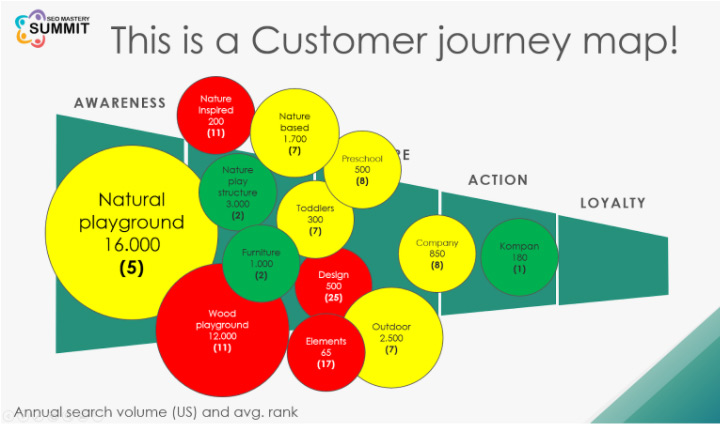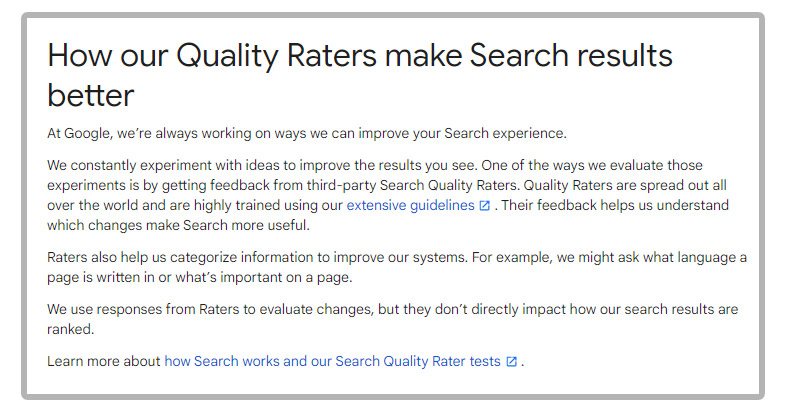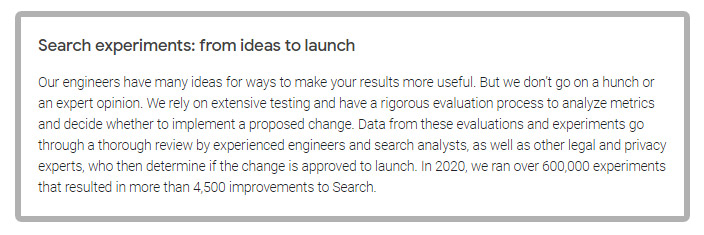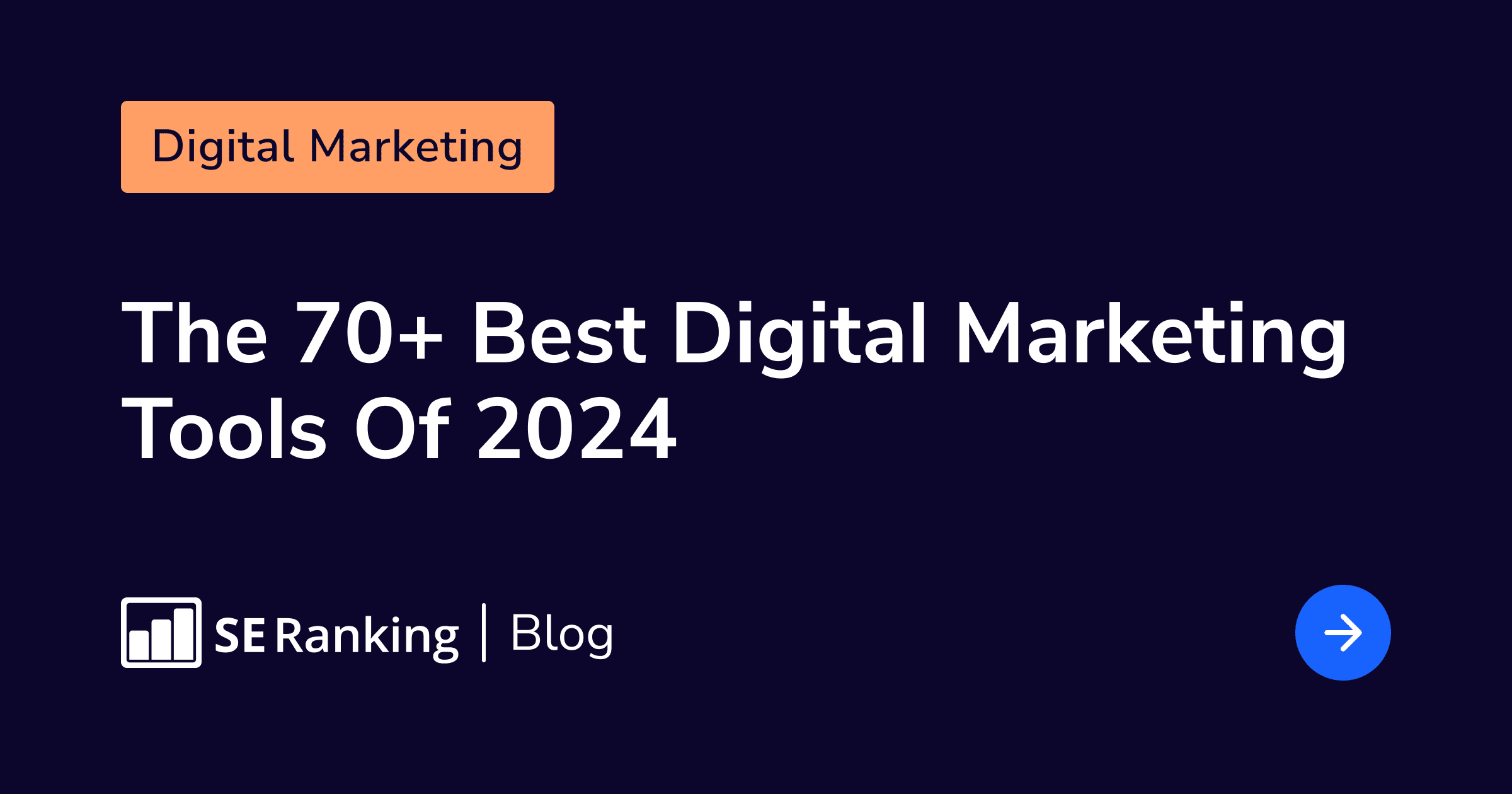
Posted by
Darrell Mordecai

After chasing after content, this month’s SEO trends roundup is finally here.
While compiling this roundup, I was really happy to discover some big-picture strategies that can help integrate your SEO into an overall marketing strategy and some out-of-the-box thinking that can exponentially increase the value of your site, all while dispelling a myth or two.
In this post you’ll find:
- How Customer Journey mapping can effectively help you understand the “conversation your prospects have with Google” so that you can easily see what intents you have overlooked
- A profound paradigm shift that’ll help you avoid sudden traffic losses when Google updates its algorithms by treating your site as its own search engine
- What Google updating their Quality Raters Guide means to your SEO, what you should do about it and what myths you should avoid
Christopher Hofman Laursen

Christopher Hofman Laursen
is the Lead SEO Specialist at the Danish digital agency IMPACT Extend. He is a writer for MOZ and will talk for the 5th consecutive year at SEOday 2022 in Denmark – the biggest Nordic SEO conference.
When identifying SEO trends – if I am allowed to only look at my clients – I would say that a major SEO trend is a focus for businesses to make sure that SEO supports their marketing campaigns. In particular, this requires two factors:
- That SEO data is central to the organization so knowledge is shared early to all participants when drawing up the marketing plan.
- Agility in the execution. SEO has historically been known as a silo discipline, which is probably a remnant from the early days when Google updated their index every 6-8 weeks. This shaped a culture of never-ending to-do lists among SEOs unattached from the rest of the organization. Google is so fast at updating today, and with BERT they understand the context much better. This means that the SEO team is able to support the running marketing campaigns and activate colleagues outside the team.
An interesting question to consider: Why is it only the SEO guy who uses Google Search Console? If this is the case in your organization, then you probably still work in the silo. Google Search Console data is marketing data. Secondly, it is SEO data.
In order to activate Google Search Console data for my clients, I have developed Customer Journey mapping for the whole Marketing department. When aiming at becoming the topic authority in the niche, this method presents the “conversation your prospects have with Google”. What are the big conversations, where do they appear in the journey, and are there intents that we have overlooked? It will make it easier to understand how to communicate with the target group and understand which content we should create.
Here is an example mapping out the customer journey for “Natural playgrounds”. The target group is local authorities. Each bubble represents a user intent on the way to acquire a natural playground, and the traffic colors represent how well we are performing today. It is a simple model and anyone understands it across the different teams:

The more data you have the better your insights. Apart from the Google Search Console data, we can enrich the customer journey map from other third-party tools and from primary data.
As I mentioned earlier, the second factor is agility in the execution. Customer journey mapping is a method to quickly provide insights. With these insights how can we then execute faster? Scarce human resources are common in the organization, but with the urgency of aligning the SEO activities with the marketing plan, we need to involve more colleagues from the PR team, the marketing intern, and the editorial team. You can use project management tools such as Asana, Monday.com, or Trello to describe the tasks to execute upon, assign them across the different teams and insert deadlines. It sure beats the old-fashioned task list in Excel found on the local drive of the SEO responsible.
The topics I have covered above are part of my SEO sprints framework.
Andrew Holland

Andrew Holland is the founder of Zoogly Media, a content marketing and SEO agency based in Staffordshire that has delivered over 2.7 million organic visitors to client websites.
Forget Google, build your own search engine.
I am sick and tired of reading the same posts online. “My traffic just dropped, has there been an update?”, “the latest update killed our traffic for no reason”.
The simple truth is that Google doesn’t care about your site, your business, or your content. It cares about people using its search engine.
It’s a battle you can never win. With a flick of a few lines of code, your number 1 ranking can vanish and be replaced by a video. They can sculpt the SERPs to have more ads, more videos, more People Also Ask sections, and scrape your page to show your content without the need for the user to click.
The only solution is to stop being found by search and become searched for.
That’s a battle you can win and win big.
OK, so we’re not going to throw the baby out with the bathwater here. We still need to use search engines to be found online, but once found we need to create sites that wow and get bookmarked or subscribed to in seconds.
And that’s where the fun begins. Every website has the power to be its own search engine for your niche or industry. If you have a question, a problem, want inspiration or ideas, why head to Google when they can come directly to your site?
This is the impact sites need to have on searchers in the next few years. SEO has largely been a game of discovery. We create content so that the search engine Gods bestow us with their approval and traffic.
But what the Gods at Google giveth they can taketh away just as easily, and they do. All the time.
So, stepping out of this game is the only way to win, or at least taking one foot out of the ring. For this to take place, there needs to be a real commitment to getting the expertise of your business onto the pages of your site.
This means that you need to audit the knowledge within your business, find out what questions your audience has, and create the answers with no desire or intention to rank online.
Sure, you’ll probably generate some new rankings. But that’s not the mission, the mission is to build your own search network. To build something that wows your visitors.
Be the Google of your niche, the Quora of your industry, the Pinterest of your community, the Facebook of your field.
The power is yours, the budget required for this is not as much as what you think, and the benefits are clear.
Aim to be the best website in your industry and you’ll create an asset that generates real value for your business.
Kristine Schachinger

Kristine Schachinger is the founder of Sites Without Walls. Undercover tech with almost 20 years of experience in website development, design, and implementation. Currently specializing in Search Engine Optimization (SEO), Site Recoveries, News, and Technology with a background in Accessibility.
Industry writer and Internationally recognized speaker.
She has worked with many SMBs and enterprise clients such as Vice News, Vice Media, Salon.com, Instacart, Patch.com, Top Ten Reviews, Patch Media, Discover, and Zappos.com.
Quality Raters Guide, Quality Raters, and E-A-T Explained
With the release of the latest Quality Raters Guidelines, it is a good time to talk about what exactly are the Quality Raters Guidelines? Who are the Quality Raters? And what is this E-A-T you always hear about?
Why are there Quality Raters?
When Google wants to make changes to the algorithms, one of the ways they test these changes to see if they are creating quality Search Results is by using humans known as Quality Raters.
What Do the Quality Raters Do?
Quality Raters rate SEARCH ENGINE RESULT PAGES (SERPs), NOT individual websites. Google creates a test they want to measure when they make an algorithm change. They then give the Quality Raters a goal or task to check against the new Search Result Pages. The Quality Raters then give feedback on these SERPs. This helps Google avoid mistakes.
In simple terms, Quality Raters are Quality Assurance Testers for Google. They make up Google’s human organic search QA team.
Enter the Quality Raters Guide
In order to get consistent and reproducible feedback from Quality Raters, Google created the Quality Raters Guide. This Quality Raters Guide outlines the types of sites Google wants to surface in a Search Result, so the Quality Raters are able to properly rate the results they are observing.
If Google did not have a guide for the Raters to follow, their ratings would be based on each individual Quality Raters’ interpretation of what is a good search result. This means that data would be inconsistent at best. This inconsistency would not give Google the reliable and actionable information they need to verify their changes are positive and in accordance with Google’s internal and business goals.
What happens to the Quality Raters data?
There is a misconception out there that Google feeds the Quality Raters ratings directly into the Machine Learning algorithms and that affects the Search Results. However, this is not how it works.
Once the Quality Raters rate the results against the given task or goal, that test is repeated 100s or even 1000s of times until Google has enough data to determine if the tests were successful.
If the test meets the task or goal, repeatedly and consistently, that test goes to the next stage. It is analyzed by data scientists, search engineers, and even lawyers before the change can be accepted.
Google ran over 600,000 tests last year.
What is the Quality Raters Guide Not?
Quality Raters do not feed the machine learning algorithms and the Quality Rates Guide is not a Search Engine Optimization (SEO) Guide.
Concepts such as E-A-T (Expertise, Authoritativeness, Trust) in the Quality Rates Guide are simply concepts for the Quality Raters to better understand how to rate the sites in the search results. Google does not evaluate E-A-T. There are no algorithms related to E-A-T. E-A-T is not a directive from Google and the Quality Rates Guide is not an SEO Guide. E-A-T just represents the sites Google hopes to surface with its algorithms. It is a goal. Not a directive.
Does this Mean the Quality Raters Guide and E-A-T are Useless or Unimportant?
No. The guide gives an excellent outline of how to build a good website that users would like to use, and it outlines the types of sites Google wants to surface. If you want site stickiness, this is a great way to help improve that.
However, it is important to know that this guide is not a secret look into Google algorithms. Much of what is listed in the Quality Rates Guide is not used by Google at all when it comes to ranking a site. Items such as expert authors, an item often cited as necessary for ranking, are not evaluated by Google according to — Google.
Be Cautious
So be careful about relying on the Quality Raters Guide as an SEO Guide, it is not and never was meant to be, an SEO Guide. It is a great way to inform changes to websites in general or when you are building a new site from the ground up, just don’t think that something in the guide will help your site rank better in Google. It may, but it likely won’t and you could waste a lot of time, effort, and resources on making changes your site does not need.
If you are looking for SEO advice, Google has created SEO guides in their Developer Documents. This is a much more helpful read if improving your site’s SEO presence is the goal.
Google’s SEO Guide:
https://developers.google.com/search/docs
Putting It All Together
Since there are so many working parts to be successful at SEO, you can’t afford to merely focus on rankings.
For instance, we often forget that SEO is a form of marketing. This means that whatever your ranking strategy is, it must be set up with sales in mind. In spite of this, the most popular SEO content online is how to improve rankings. But, without ranking the right content that focuses on your audience, high rankings are worthless. Content mapping is a great way to design your SEO (and other digital marketing channels) to bring you sales.
What’s more, Google is its own property with its own goals. This means if Google doesn’t see your content aligning with its goals, it’ll drop you like a *** potato. To counter this, we’ve learned a nice out-of-the-box approach to dealing with this. Make your site the search engine, not Google.
Finally, as Google has republished its Quality Raters Guide, we’ve learned what the quality raters actually do and how it trickles down to the algorithms. And, yes, that means dispelling a few myths along the way.







